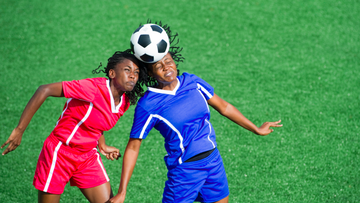Goal distribution is a vital skill for goalkeepers to learn. Knowing when to kick or throw the ball separates the “good” goalkeepers from the “elite” ones. More importantly, it helps to capitalize on plays and reduce the likelihood of making errors.
Some of the greatest goalkeepers on the planet, such as Manuel Neuer, Ederson, and Alisson Becker, excel because of their goal distribution skills. This post will examine the importance of goal distribution skills and how goalies can improve their skills with a simple drill.
Benefits of the Goal Distribution Drills
If a goalkeeper can’t safely pass the ball or play it with their feet, they’ll be ineffective. This rings true even if they’re exceptionally talented at shot-blocking or have great explosive ability. It’s as simple as that. Some coaches agree that when a goalkeeper has poor ball distribution, it’s as if the team only has ten players.
Ball distribution drills for goalkeepers improve their decision-making and tactical abilities. Better ball distribution allows teams to retain possession of the ball and launch a counterattack faster. Ultimately, it helps goalkeepers stay more in sync with defenders and provides more opportunities to push the ball forward. Of course, this requires practice, hence why ball distribution drills are important.
Breakdown of Goal Distribution Drills
For this post, we’ll focus on one distribution drill for goalkeepers to practice. This particular drill doesn’t have a fancy name, but it gets the job done and is somewhat popular throughout youth soccer leagues.
To begin, coaches will establish an area that measures 20x15 yards. They will place two rows of cones at the top of this rectangle and two four-yard goals at the bottom of it. Ideally, the drill will involve six players and an ample supply of balls and cones.
The drill goes like this: coaches will designate two players as servers, two as working keepers, and the remaining two as static keepers at the bottom of the rectangle.
The servers will pass the ball to the working keepers under three scenarios: low-ball, midriff ball, and overhead ball.
After the keeper has finished the three challenges, they will attempt to beat the keeper in the goal by rolling the ball on the ground.
The players will then return to their original positions. The middle working keepers will then switch places by running through the rows of cones.
How to Practice Goal Distribution Drills


The actual drill itself is fairly straightforward, even simpler than the setup.
- First off, the server will play the ball into a midriff position for the goalkeeper to catch and hold.
- Next, the server will launch a low ball strike towards the goalkeeper.
- Afterward, the keeper will try to roll the ball at a brisk pace to the goalie at the bottom of the rectangle.
- Once the goalkeeper has rolled the ball, they will switch places by running in through the rows of cones.
- The server will then throw a high ball to meet the goalkeeper as they leave the last cone. This throw should be well-timed.
How to Incorporate Goal Distribution Drills Into Routine
Coaches have flexibility when incorporating distribution drills. It doesn’t involve advanced physical conditioning, but the mental aspect of it is somewhat challenging. But players can still practice goalie distribution drills multiple times a week.
In most cases, though, 2-3 practice sessions per week will suffice. You can have players carry the drill for six minutes at a time, rotating the two inside players every two minutes. Repeat this again so that the drill lasts for a total of 12 minutes.
Ball Distribution Drills Make Goalkeepers Elite
The beauty of ball distribution drills for goalkeepers is that they’re not too intensive. They’re mentally challenging, but they’re quick. Regular practice will help drill effective passing and kicking into a goalkeeper’s muscle memory, and they will improve their distribution in a matter of weeks.
Of course, keepers should work on passing and kicking individually as well. Watching game footage of great goalkeepers will also build a mental archive of how to distribute the ball for a given scenario. Ultimately, working on ball distribution will help goalkeepers drive the attack of a team rather than simply keeping the defense strong.
Looking for more tips on soccer training drills? Check out our Storelli blog for training ideas and insights.

